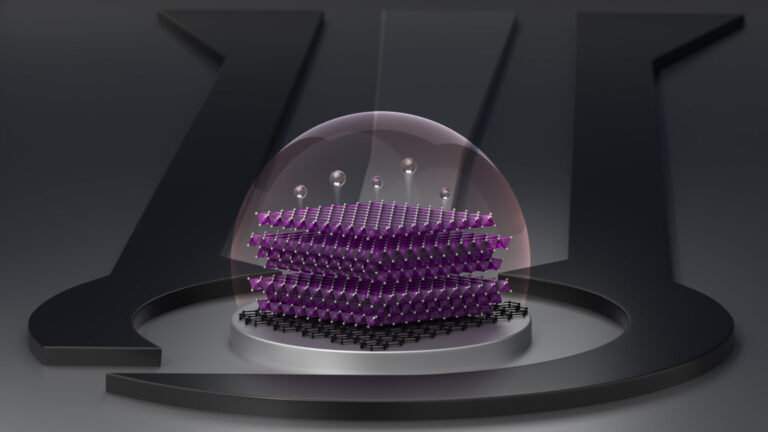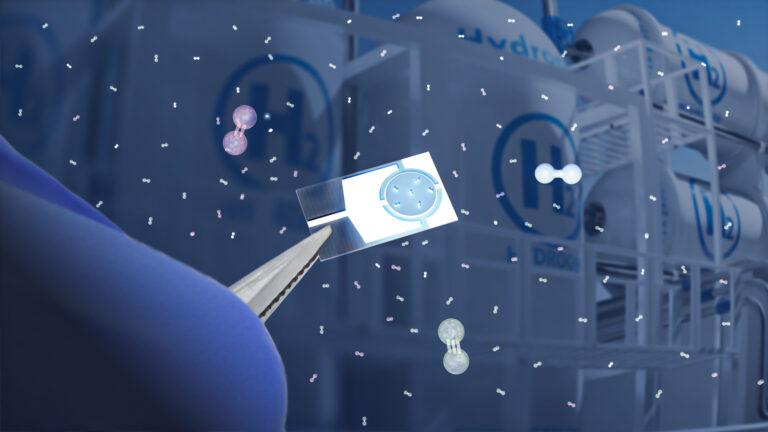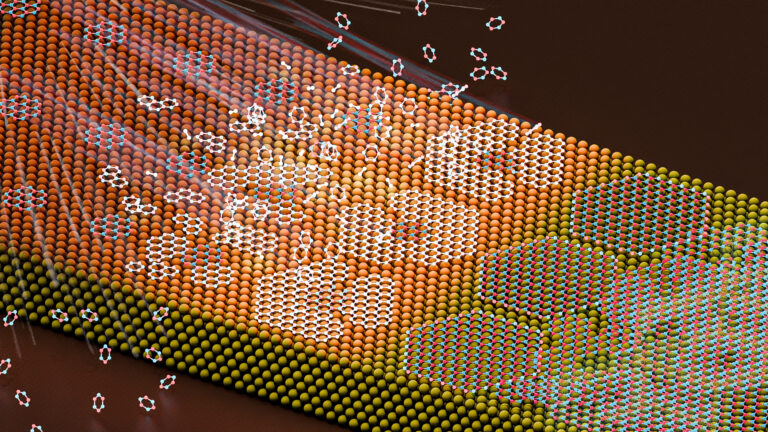Material Science and Engineering
Pushing perovskites further
Hybrid perovskites are shown to have record-breaking stability and performance.

A hybrid approach to advance solar technology aims to generate more powerful solar cells by making better use of the solar energy spectrum while increasing efficiency and stability[1].
Researchers are taking this hybrid approach by combining traditional solar cells in tandem with more innovative materials called perovskites. Perovskites are a wide variety of crystalline materials that share specific general structural characteristics based on a combination of three types of chemical ions. They are being recruited into an ever-expanding range of applications, including solar cells, catalysts, sensors and much more.
Leading this research are KAUST’s solar researchers Esma Ugur, Erkan Aydin and Stefaan De Wolf.
“Our strategy uses a specific additive during the deposition of the halide perovskite layers to keep the perovskite top cell of the structure stable over time in the required operational conditions”, Ugur explains. She says that the impressive progress at KAUST has achieved record performance enhancements, expected to bring cheaper and more effective perovskites into widespread use.
The latest improvements created a more consistent distribution of voltage across the perovskite film. This allowed the team to set two new records for the highest power conversion efficiency (PCE) of any two-junction solar cell under nonconcentrated light.
“We reached one version at 33.2% PCE in April 2024 and another at 33.7% in June,” says Aydin. “These achievements prove the high efficiency potential of perovskite/silicon tandems and they effectively address two major issues where improvements are needed.”
One of the greatest technical achievements came by modifying the way in which positive charge is spread across the key molecule methylenediammonium dichloride (MDACl2). This facilitates the formation of tetrahydrotriazinium (THTZ-H+) in-situ. The cyclic nature of the THTZ-H+ positive ion (cation) allows it to form strong hydrogen bonds with halides in multiple directions within the perovskite lattice. This arrangement enhances the overall PCE and also the stability of the perovskites under prolonged light and heat exposure.
Reflecting on the challenges of the complex teamwork required throughout this research, De Wolf explains that tandem solar cells are significantly more complex structures than conventional solar cells
“Developing our cells from scratch to become top performing champions took several years of efforts by a dedicated team with expertise in various disciplines, including fundamental sciences such as physics and chemistry, materials science, engineering and device engineering.”
The team is optimistic that further advances are on the way. They believe there is still room to achieve higher power outputs, although that may require more fundamental and time-consuming research and development activities.
“We will continue pushing the boundaries of tandem cells,” De Wolf concludes. “While our advances should be applicable worldwide, they will also be especially useful for developing long-term efficient tandem solar cells suitable for hot and humid climates like Saudi Arabia.”
The technology is already on the path to commercialization in collaboration with several major photovoltaic manufacturers worldwide.
Reference
- Ugur, E., Said. A.A., Dally, P., Zhang. S., Petoukhoff. C.E., Rosas-Villalva, D., Zhumagali, S., Yildirim. B.K., Razzaq, A., Sarwade, S., Yazmaciyan, A., Baran, D., Laquai, F., Deger, C., Yavuz, I., Allen, T.G., Aydin, E. & De Wolf, S. Enhanced cation interaction in perovskites for efficient tandem solar cells with silicon. Science 385, 533-538 (2024).| article
You might also like

Material Science and Engineering
Electron movie guides design of layered perovskite materials

Material Science and Engineering
Remote region sensor for essential vitamin deficiency

Material Science and Engineering
Low-power hydrogen sensor detects leaks in an instant

Material Science and Engineering
Illuminating pathways to long-lived organic solar cells

Chemistry
Beating the dark current for safer X-ray imaging

Chemical Engineering
Net benefits for advanced materials design

Material Science and Engineering
Atom-thin insulator grown into perfect films

Material Science and Engineering




